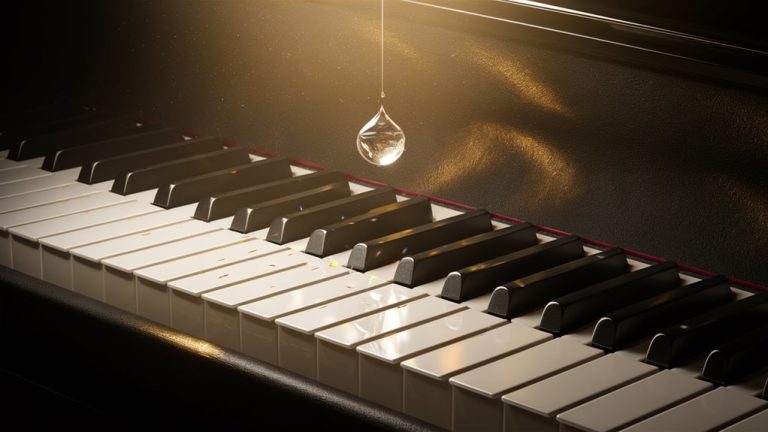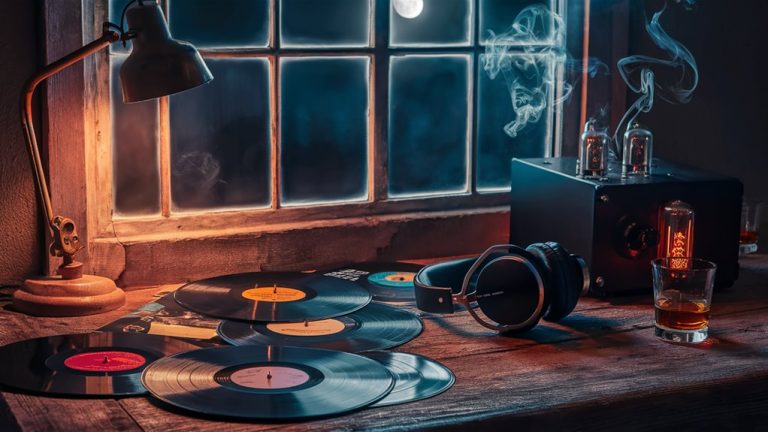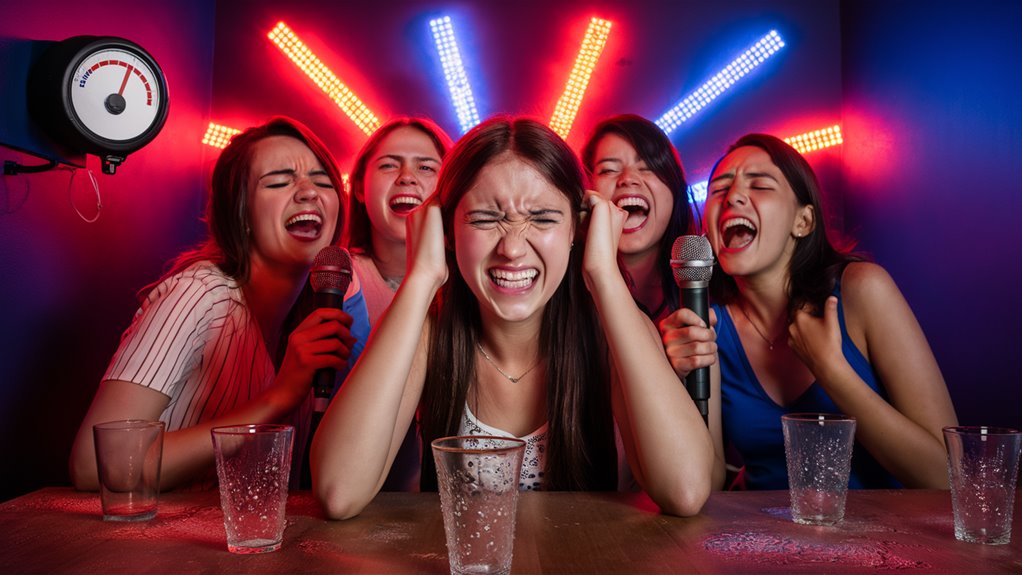
How Loud Is Too Loud in a Karaoke Room: Safe Volume Rules
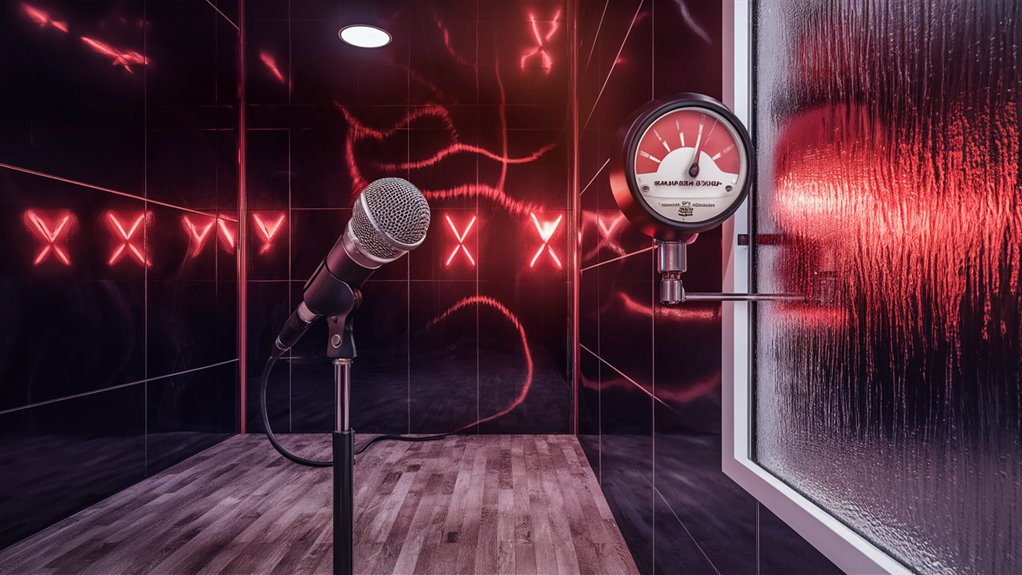
Know Safe Sound Levels for Karaoke
The best sound level for karaoke rooms should stay under 85 decibels (dB) during long sing-alongs. This mark is the safe sound level for all-day noise.
How Long to Hear Music
While usual karaoke places play music between 85-95 dB, these time limits are key:
- 4 hours max at 88 dB 이 블로그 글 전체 읽기
- 2 hours max at 91 dB
- 30 minutes max at 94 dB
Signs of Too Much Noise and How to Stay Safe
Look for these signs of too much noise:
- Ear ringing
- Sound feels dull
- Ear hurts or feels stuffed
Tools and Tips for Sound Control
Use a decibel meter app to check sound levels in your karaoke spot. Think about how sound moves in your room and keep an eye on how loud and how long you sing to keep it safe.
Mixing right sound control with good time keeping makes sure you have fun and keep your hearing safe while singing.
Decibel Levels in Karaoke Spots
How Sound is Measured
Measuring decibels is based on a scale where every 10 dB jump means sound seems twice as loud.
The scale starts at 0 dB (the softest we can hear), and a normal talk is about 60 dB. This basic info is needed for good sound checks in places of fun.
Karaoke Room Sound
Sound levels in karaoke spots usually go from 75 dB for light music to loud highs of 110 dB when performing.
Most karaoke places run at 85-95 dB, like city road noise. Staying around 85 dB too long can hurt your hearing.
Pro Sound Checks
To measure sound in karaoke, you need special gear to watch both steady noise and sharp loud sounds. Pro sound tests look at many things:
- Room size and shape
- Sound soaking materials
- Where speakers are
- Safe listening times
- How loud can it go
With these measures, spots can set safe sound limits while making sure everyone has a good time and stays safe.
Hearing Hurt Signs: Must-Know for Karaoke Safety
Main Signs of Hearing Loss
Finding early signs of hearing loss during singing sessions can stop lasting ear harm.
Watch for these signs:
- Ear noise that stays (tinnitus)
- Sound feels muffled
- Hard to get words in loud spots
Body Signs Right Away
Quick Body Signs
Hearing tiredness shows up through clear signs:
- Ears feel full or pressurized
- Needing sound to be louder for daily stuff
- Super sensitive to normal sounds
Big Warning Signals
Big signs that need quick action:
- Feeling dizzy or mixed up
- Strong ear pain
- Hearing loss for more than one day
Long-Time Bad Signs
Risks of lasting harm:
- Hair cells in ears hurt
- Short-term hearing dips
- Muscles in ears tired
If these symptoms show during karaoke, leave right away.
Temporary hearing changes that last more than a day often mean lasting ear damage. If this happens, see a doctor.
Right Sound Levels for Karaoke Rooms
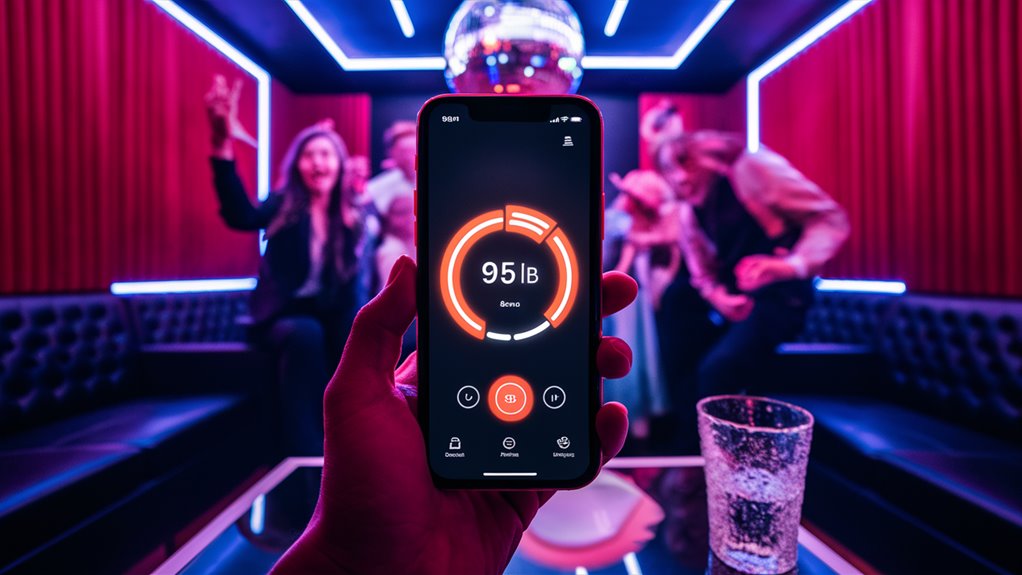
Best Sound Level Rules
Managing sound right in karaoke rooms means keeping sound between 85-90 decibels (dB) for fun singing. This level lets you hear well but keeps ears safe.
The key safety mark is at 94 dB, past which hearing might get lasting harm from too much noise.
Sound Checks and Time Caps
Pro sound checks with good gear or apps are needed for safe sound.
The main 3 dB rule guides how long you can hear sound: every 3 dB over 85 dB means cutting hearing time in half.
Keep to 4-hour max at 88 dB and 2-hour caps at 91 dB.
Background music should be between 75-80 dB, letting you sing without needing to shout.
Room Sound and Speaker Spots
Checking sound right means checking at many spots: near speakers, where you perform, and where people sit.
Keeping space means keeping speakers at least 6 feet away from singers, using the rule that sound drops off with more distance. This setup makes the sound clearer and safer.
Room Size and How It Handles Sound in Karaoke Spots
Know How Sound Moves in Different Room Sizes
Room size matters a lot for how sound moves and feels in karaoke spots.
Smaller rooms under 200 square feet push sound waves harder, making the sound seem louder even if speakers are low.
Sound echoes in tight spaces make strong echoes and sound waves bounce.
Big Room Sound Handling
Bigger spots over 400 square feet face different sound issues, like long echoes and spots where it’s hard to hear clearly.
The key distance to measure – where direct sound equals echo sound – is vital for where to put speakers and setting sound right.
Ceiling Height and Sound Quality
Ceiling height is a big deal for how sound performs.
Normal 8-foot ceilings make more pressure and sound bounce compared to higher 10-12 foot ceilings.
Setting up the sound system needs exact sound fixes, usually changing output by 3dB for every 25% change in room size, and putting in good sound treatments.
Complete Guide to Sound Apps
Understand Sound App Tech
Sound apps change how we see sound with smart phone power. Top apps like NIOSH SLM and Decibel X give very right sound level info, turning phones into top sound check tools.
Good Ways to Check Sound Levels
Put sound check things at ear height, keeping a 1-meter space from where sound comes for right numbers.
Up-to-date sound apps can pick up sound levels from 30 dB to 130 dB, though phones do best under 95 dB.
Pick A-weighted number checks (dBA) to match how we hear sound. The Best K-Pop Duets for an Exciting Karaoke Session
Top Sound Checking Ways
Sound Info Right Now
Set up regular sound watch by getting many info spots during sound checks.
Watch top sound levels during loud parts and keep a full log of sound numbers.
Top app features have built-in signs for when sound gets too loud, going over 85 dBA, letting you bring the sound down right away for safe sound.
Main Sound Check Parts
- Sound level checks as they happen
- Decibel level watch by A-weight
- Finding top loud points
- Signs for when it’s too loud
- Keeping sound checks going
